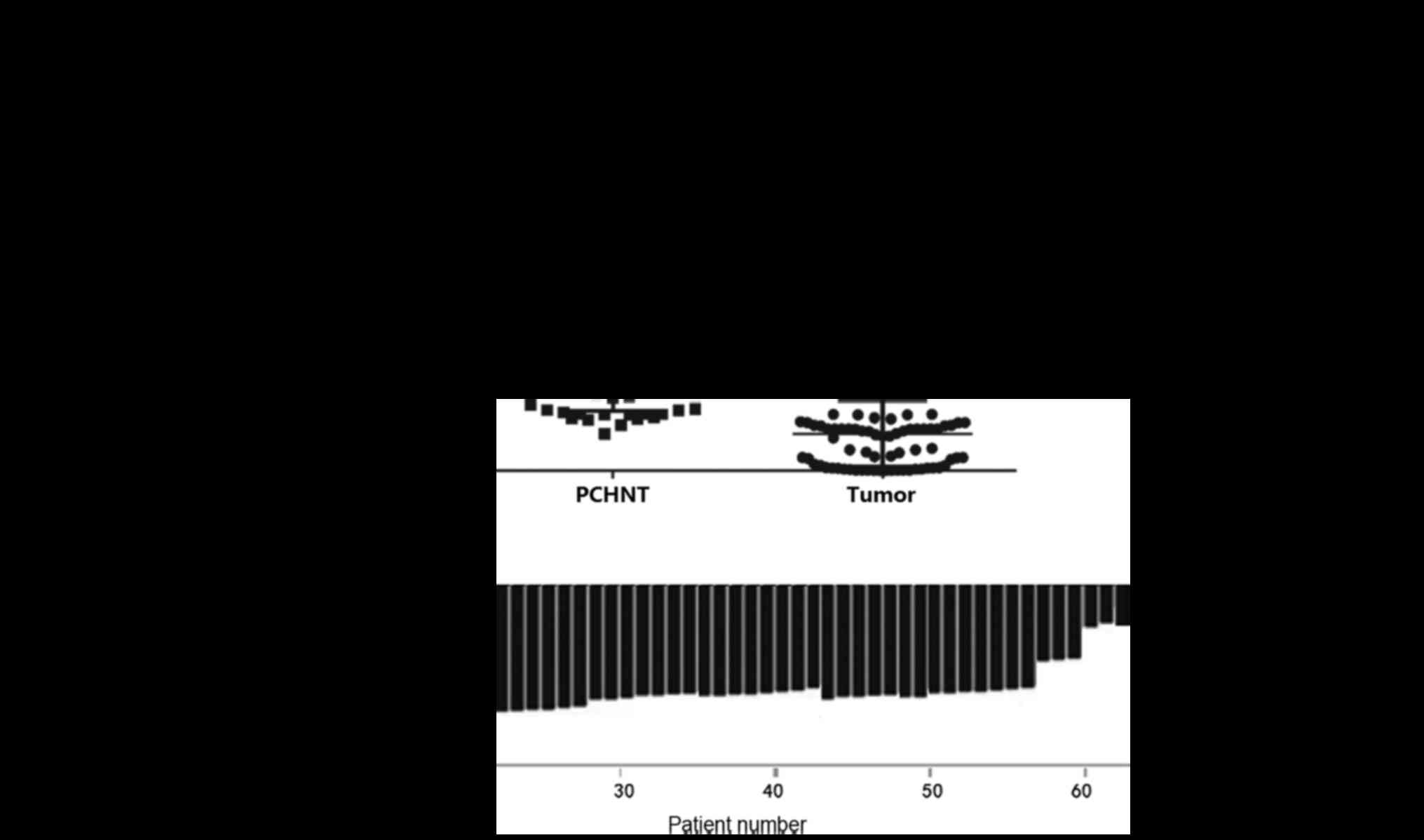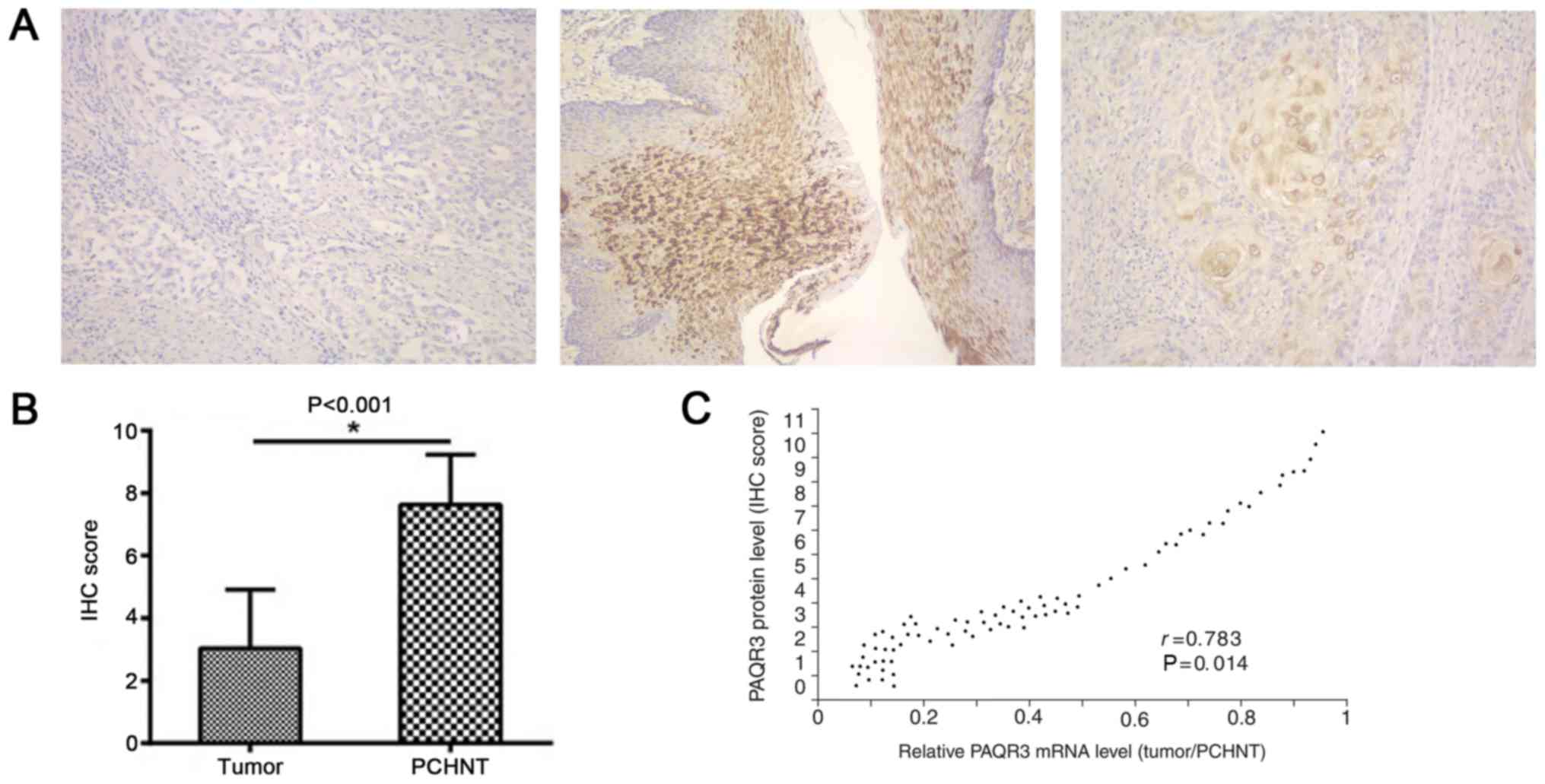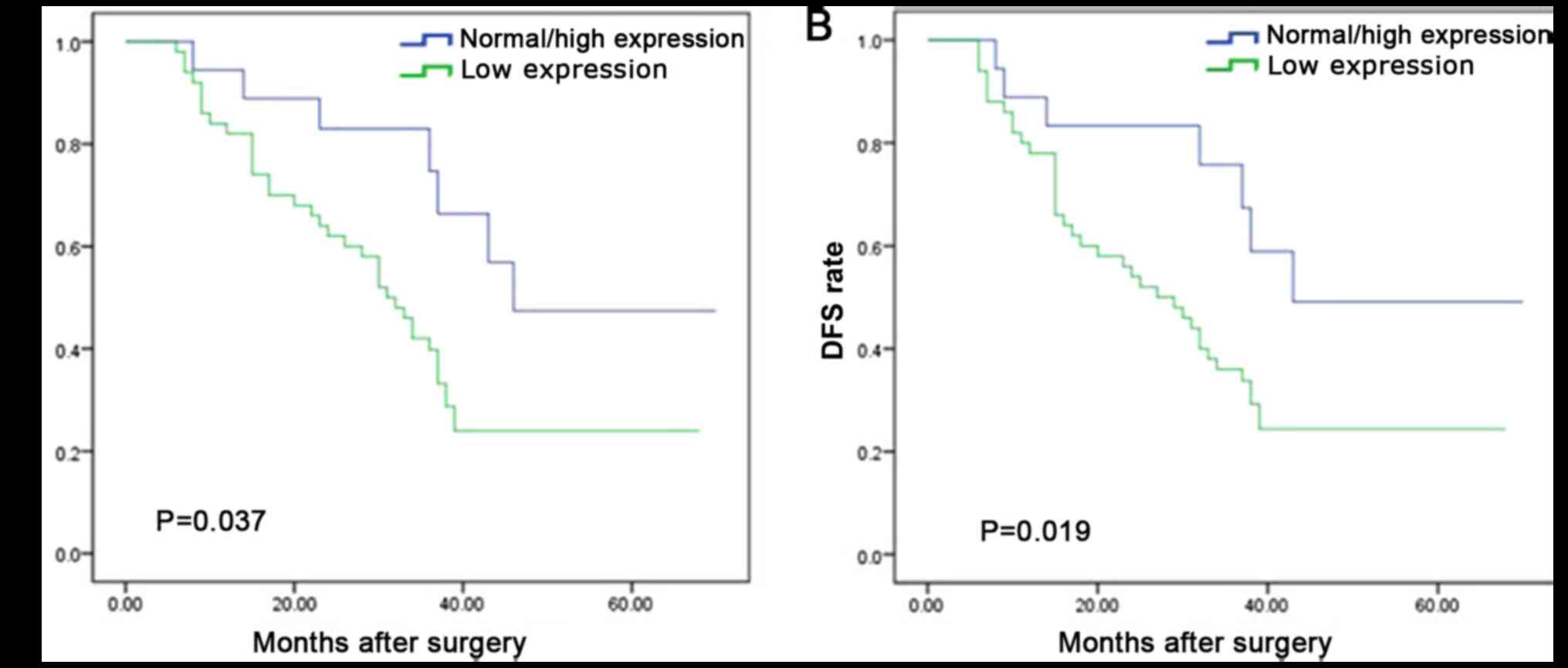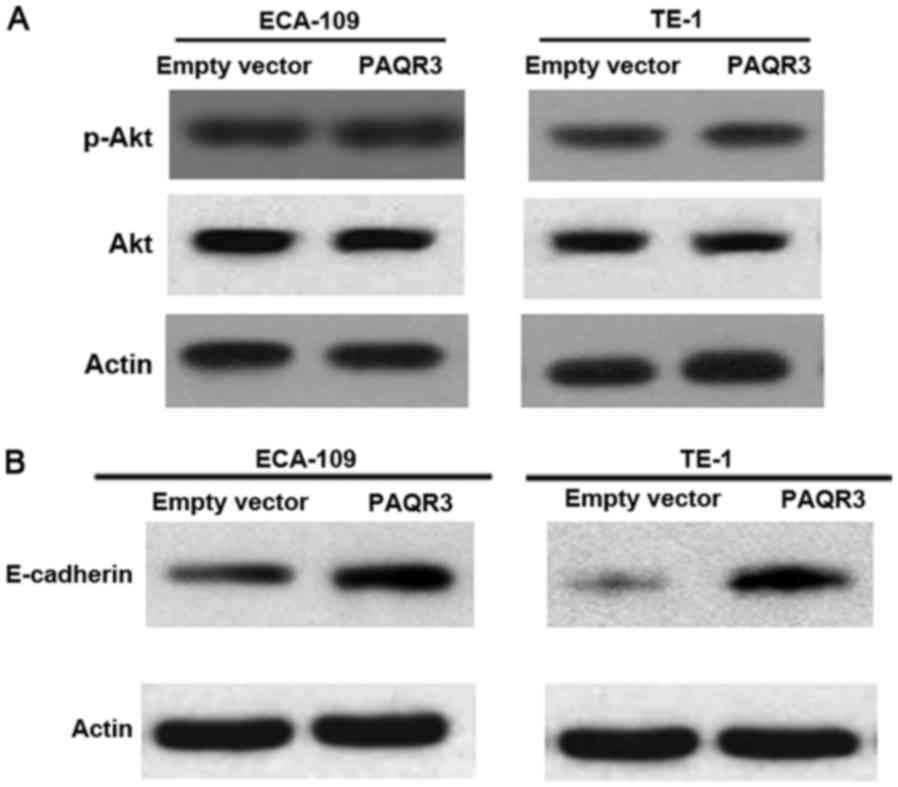|
1
|
Torre LA, Bray F, Siegel RL, Ferlay J,
Lortet-Tieulent J and Jemal A: Global cancer statistics, 2012. CA
Cancer J Clin. 65:87–108. 2015. View Article : Google Scholar : PubMed/NCBI
|
|
2
|
Kamangar F, Dores GM and Anderson WF:
Patterns of cancer incidence, mortality, and prevalence across five
continents: Defining priorities to reduce cancer disparities in
different geographic regions of the world. J Clin Oncol.
24:2137–2150. 2006. View Article : Google Scholar : PubMed/NCBI
|
|
3
|
Ferlay J, Shin HR, Bray F, Forman D,
Mathers C and Parkin DM: Estimates of worldwide burden of cancer in
2008: GLOBOCAN 2008. Int J Cancer. 127:2893–2917. 2010. View Article : Google Scholar : PubMed/NCBI
|
|
4
|
Samatar AA and Poulikakos PI: Targeting
RAS-ERK signalling in cancer: Promises and challenges. Nat Rev Drug
Discov. 13:928–942. 2014. View
Article : Google Scholar : PubMed/NCBI
|
|
5
|
Tasioudi KE, Saetta AA, Sakellariou S,
Levidou G, Michalopoulos NV, Theodorou D, Patsouris E and
Korkolopoulou P: pERK activation in esophageal carcinomas:
Clinicopathological associations. Pathol Res Pract. 208:398–404.
2012. View Article : Google Scholar : PubMed/NCBI
|
|
6
|
Feng L, Xie X, Ding Q, Luo X, He J, Fan F,
Liu W, Wang Z and Chen Y: Spatial regulation of Raf kinase
signaling by PAQR3. Proc Natl Acad Sci USA. 104:pp. 14348–14353.
2007; View Article : Google Scholar : PubMed/NCBI
|
|
7
|
Yu X, Li Z, Chan MT and Wu WK: PAQR3: A
novel tumor suppressor gene. Am J Cancer Res. 5:2562–2568.
2015.PubMed/NCBI
|
|
8
|
Fan F, Feng L, He J, Wang X, Jiang X,
Zhang Y, Wang Z and Chen Y: PAQR3 sequesters B-Raf to the Golgi
apparatus and inhibits the proliferation and tumorigenicity of
human malignant melanoma cells. Carcinogenesis. 29:1157–1163. 2008.
View Article : Google Scholar : PubMed/NCBI
|
|
9
|
Xie X, Zhang Y, Jiang Y, Liu W, Ma H, Wang
Z and Chen Y: Suppressive function of PAQR3 on chemical
carcinogen-induced skin carcinogenesis in mouse. Carcinogenesis.
29:1632–1638. 2008. View Article : Google Scholar : PubMed/NCBI
|
|
10
|
Wu HG, Zhang WJ, Ding Q, Peng G, Zou ZW,
Liu T, Cao RB, Fei SJ, Li PC, Yang KY, et al: Identification of
PAQR3 as a new candidate tumor suppressor in hepatocellular
carcinoma. Oncol Rep. 32:2687–2695. 2014. View Article : Google Scholar : PubMed/NCBI
|
|
11
|
Li Z, Ling ZQ, Guo W, Lu XX, Pan Y, Wang Z
and Chen Y: PAQR3 expression is downregulated in human breast
cancers and correlated with HER2 expression. Oncotarget.
6:12357–12368. 2015.PubMed/NCBI
|
|
12
|
Wang L, Wang X, Li Z, Xia T, Zhu L, Liu B,
Zhang Y, Xiao F, Pan Y, Liu Y, et al: PAQR3 has modulatory roles in
obesity, energy metabolism, and leptin signaling. Endocrinology.
154:4525–4535. 2013. View Article : Google Scholar : PubMed/NCBI
|
|
13
|
Qiao S, Guo W, Liao L, Wang L, Wang Z,
Zhang R, Xu D, Zhang Y, Pan Y, Wang Z and Chen Y: DDB2 is involved
in ubiquitination and degradation of PAQR3 and regulates
tumorigenesis of gastric cancer cells. Biochem J. 469:469–480.
2015. View Article : Google Scholar : PubMed/NCBI
|
|
14
|
Ling ZQ, Guo W, Lu XX, Zhu X, Hong LL,
Wang Z, Wang Z and Chen Y: A Golgi-specific protein PAQR3 is
closely associated with the progression, metastasis and prognosis
of human gastric cancers. Ann Oncol. 25:1363–1372. 2014. View Article : Google Scholar : PubMed/NCBI
|
|
15
|
Wang X, Li X, Fan F, Jiao S, Wang L, Zhu
L, Pan Y, Wu G, Ling ZQ, Fang J and Chen Y: PAQR3 plays a
suppressive role in the tumorigenesis of colorectal cancers.
Carcinogenesis. 33:2228–2235. 2012. View Article : Google Scholar : PubMed/NCBI
|
|
16
|
Livak KJ and Schmittgen TD: Analysis of
relative gene expression data using real-time quantitative PCR and
the 2(-Delta Delta C(T)) method. Methods. 25:402–408. 2001.
View Article : Google Scholar : PubMed/NCBI
|
|
17
|
Guo W, You X, Xu D, Zhang Y, Wang Z, Man
K, Wang Z and Chen Y: PAQR3 enhances Twist1 degradation to suppress
epithelial-mesenchymal transition and metastasis of gastric cancer
cells. Carcinogenesis. 37:397–407. 2016. View Article : Google Scholar : PubMed/NCBI
|
|
18
|
Oncomine database. https://www.oncomine.org/resource/login.html
|
|
19
|
Zhang Y: Xinjiang esophageal cancer
distribution. Xinjiang Medical College. 11:139–144. 1988.
|
|
20
|
Wang L, Pan Y, Huang M, You X, Guo F and
Chen Y: PAQR3 augments amino acid deprivation-induced autophagy by
inhibiting mTORC1 signaling. Cell Signal. 33:98–106. 2017.
View Article : Google Scholar : PubMed/NCBI
|
|
21
|
Bai G, Chu J, Eli M, Bao Y and Wen H:
PAQR3 overexpression suppresses the aggressive phenotype of
esophageal squamous cell carcinoma cells through the ERK pathway.
Biomed Pharmacother. 94:1–819. 2017. View Article : Google Scholar : PubMed/NCBI
|
|
22
|
Wu Q, Zhuang K and Li H: PAQR3 plays a
suppressive role in laryngeal squamous cell carcinoma. Tumour Biol.
37:561–565. 2016. View Article : Google Scholar : PubMed/NCBI
|
|
23
|
Huang W, Guo W, You X, Pan Y, Dong Z, Jia
G, Yang C and Chen Y: PAQR3 suppresses the proliferation, migration
and tumorigenicity of human prostate cancer cells. Oncotarget.
8:53948–53958. 2016.PubMed/NCBI
|
|
24
|
Huang J, Xiang T, Luo X, Huang J, Xiao Y,
Yang B, Yin X, Li H, Xia Li X, Peng W, et al: RKTG, a RAS/RAF/ERK
signaling antagonist regulated by HER2, suppresses malignant
phenotypes and enhances chemosensitivity in breast cancer cells. J
Third Military Med Univ. 8:1658–1662. 2013.
|














